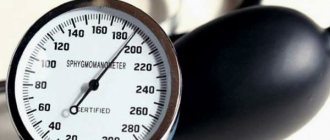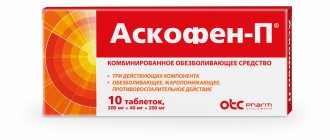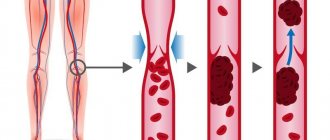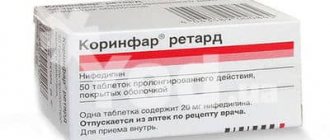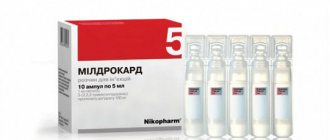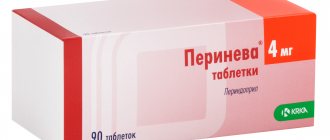Ro-statin
Effect on the kidneys
In patients receiving high doses of the drug (mainly 40 mg), tubular proteinuria was observed, which, in most cases, was transient. This proteinuria did not indicate acute kidney disease or progression of kidney disease. In patients taking the drug at a dose of 40 mg, it is recommended to monitor renal function parameters during treatment.
From the musculoskeletal system
When using the drug in all dosages and especially when taking doses of the drug exceeding 20 mg, the following effects on the musculoskeletal system have been reported: myalgia, myopathy, and in rare cases, rhabdomyolysis.
Determination of CPK activity
Determination of CPK activity should not be carried out after intense physical activity or in the presence of other possible reasons for increased CPK activity, which may lead to incorrect interpretation of the results obtained. If the initial CPK activity is significantly increased (5 times higher than ULN), a repeat measurement should be taken after 5-7 days. Therapy should not be started if a repeat test confirms the initial CPK activity (more than 5 times higher than the ULN).
Before starting therapy
When prescribing the drug, as well as when prescribing other HMG-CoA reductase inhibitors, caution should be exercised in patients with existing risk factors for myopathy/rhabdomyolysis; it is necessary to consider the balance of risk and possible benefit of therapy and conduct clinical observation.
During therapy
The patient should be informed to immediately report to the doctor the unexpected onset of muscle pain, muscle weakness or cramps, especially in combination with malaise and fever. In such patients, CPK activity should be determined. Therapy should be discontinued if CPK activity is significantly increased (more than 5 times the ULN) or if muscle symptoms are severe and cause daily discomfort (even if CK activity is increased no more than 5 times the ULN) .
If symptoms disappear and CPK activity returns to normal, re-prescribing the drug or other HMG-CoA reductase inhibitors in lower doses should be considered with careful monitoring of the patient. Routine monitoring of CPK activity in the absence of symptoms is impractical. Very rare cases of immune-mediated necrotizing myopathy have been reported with clinical manifestations of persistent proximal muscle weakness and increased serum CPK activity during treatment or upon discontinuation of statins. Additional studies of the muscular and nervous system, serological studies, and therapy with immunosuppressive drugs may be required.
There were no signs of increased effects on skeletal muscles when taking the drug and concomitant therapy. However, an increase in the number of cases of myositis and myopathy has been reported in patients taking other HMG-CoA reductase inhibitors in combination with fibric acid derivatives, including gemfibrozil, cyclosporine, nicotinic acid in lipid-lowering doses (more than 1 g / day), azole antifungals, HIV protease inhibitors and macrolide antibiotics. Gemfibrozil increases the risk of myopathy when used together with certain HMG-CoA reductase inhibitors. Therefore, concomitant use with gemfibrozil is not recommended. The balance of risk and possible benefit should be carefully weighed when using the drug together with fibrates or lipid-lowering doses of nicotinic acid. Taking the drug at a dose of 40 mg together with fibrates is contraindicated.
2-4 weeks after the start of treatment and/or when the dose of the drug is increased, monitoring of lipid metabolism parameters is necessary (if necessary, dose adjustment is required).
Effect on the liver
It is recommended to determine liver function indicators before starting therapy and 3 months after starting therapy. Reception should be stopped or the dose of the drug reduced if the activity of 'liver' transaminases in the blood serum is 3 times higher than the ULN.
In patients with hypercholesterolemia due to hypothyroidism or nephrotic syndrome, treatment of underlying diseases should be carried out before starting treatment.
Special populations.
Ethnic groups
During pharmacokinetic studies among Mongoloid patients, an increase in the systemic concentration of the drug was noted compared with the indicators obtained among Caucasian patients.
HIV protease inhibitors
Concomitant use of the drug with HIV protease inhibitors is not recommended.
Lactose
Should not be taken by patients with rare hereditary galactose intolerance, lactase deficiency and glucose-galactose malabsorption syndrome.
Interstitial lung disease
Isolated cases of interstitial lung disease have been reported with some statins, especially over long periods of use. Manifestations of the disease may include shortness of breath, nonproductive cough and deterioration in general health (weakness, weight loss and fever). If interstitial lung disease is suspected, statin therapy should be discontinued.
Diabetes mellitus type 2
In patients with glucose concentrations from 5.6 to 6.9 mmol/L, drug therapy was associated with an increased risk of developing type 2 diabetes mellitus.
But research has been conducted to study the effect of the drug on the ability to drive a vehicle and use machinery. Caution should be exercised when driving vehicles or doing work that requires increased concentration and speed of psychomotor reactions (dizziness may occur during therapy).
Ro-statin
From the urinary system
In patients receiving high doses of rosuvastatin (mainly 40 mg), tubular proteinuria was observed, which in most cases was transient. This proteinuria did not indicate acute kidney disease or progression of kidney disease. In patients taking the drug at a dose of 40 mg, it is recommended to monitor renal function parameters during treatment.
From the musculoskeletal system
The following effects on the musculoskeletal system have been reported with the use of rosuvastatin at all dosages and, in particular, when taking doses of the drug exceeding 20 mg: myalgia, myopathy, and in rare cases, rhabdomyolysis.
Determination of creatine phosphokinase activity
Determination of CPK activity should not be carried out after intense physical exercise or in the presence of other possible reasons for increased CPK activity, which
may lead to incorrect interpretation of the results obtained. If the initial CPK activity is significantly increased (5 times higher than the upper limit of normal), a repeat measurement should be taken after 5-7 days. Therapy should not be started if a repeat test confirms the initial CPK activity (more than 5 times the upper limit of normal).
Before starting therapy
When prescribing the drug Ro-statin, as well as when prescribing other HMG-CoA reductase inhibitors, caution should be exercised in patients with existing risk factors for myopathy/rhabdomyolysis; it is necessary to consider the balance of risk and possible benefit of therapy and conduct clinical observation.
During therapy
The patient should be informed to immediately report to the doctor the unexpected onset of muscle pain, muscle weakness or cramps, especially in combination with malaise and fever. In such patients, CPK activity should be determined. Therapy should be discontinued if CPK activity is significantly increased (more than 5 times the upper limit of normal) or if muscle symptoms are severe and cause daily discomfort (even if CPK activity is less than 5 times the upper limit norms). If symptoms disappear and CPK activity returns to normal, re-prescribing Rostatin or other HMG-CoA reductase inhibitors in lower doses should be considered with careful monitoring of the patient. Routine monitoring of CPK activity in the absence of symptoms is impractical. Very rare cases of immune-mediated necrotizing myopathy have been reported with clinical manifestations in the form of persistent weakness of the proximal muscles and increased CPK activity in the serum during treatment or upon discontinuation of statins, incl. rosuvastatin. Additional studies of the muscular system and nervous system, serological studies, and therapy with immunosuppressive drugs may be required.
There were no signs of increased effects on skeletal muscles when taking the drug Rostatin and concomitant therapy. However, an increase in the number of cases of myositis and myopathy has been reported in patients taking other HMG-CoA reductase inhibitors in combination with fibric acid derivatives, including gemfibrozil, cyclosporine, nicotinic acid in lipid-lowering doses (more than 1 g / day), azole antifungals, inhibitors HIV proteases and macrolide antibiotics. Gemfibrozil increases the risk of myopathy when used together with certain HMG-CoA reductase inhibitors. Thus, the simultaneous use of Rostatin and gemfibrozil is not recommended. The balance of risk and possible benefit should be carefully weighed when using the drug Rostatin together with fibrates or lipid-lowering doses of nicotinic acid (more than 1 g/day). Taking the drug Rostatin at a dose of 40 mg together with fibrates is contraindicated. 2-4 weeks after the start of treatment and/or when increasing the dose of the drug Ro-statin, monitoring of lipid metabolism parameters is necessary (if necessary, dose adjustment is required). Effect on liver function
It is recommended to determine liver function indicators before starting therapy and 3 months after starting therapy. Taking Rostatin should be stopped or the dose reduced if the activity of hepatic transaminases in the blood serum is 3 times higher than the upper limit of normal.
In patients with hypercholesterolemia due to hypothyroidism or nephrotic syndrome, treatment for underlying diseases should be carried out before starting treatment with Rostatin. Special populations. Ethnic groups
During pharmacokinetic studies among Chinese and Japanese patients, an increase in systemic concentrations of rosuvastatin was noted compared with values obtained among European patients.
HIV protease inhibitors
Concomitant use of the drug with HIV protease inhibitors is not recommended. Lactose
The drug should not be used in patients with lactase deficiency, galactose intolerance and glucose-galactose malabsorption.
Interstitial lung disease
Isolated cases of interstitial lung disease have been reported with some statins, especially over long periods of use. Manifestations of the disease may include shortness of breath, non-productive cough and deterioration in general health (weakness, weight loss and fever). If interstitial lung disease is suspected, statin therapy should be discontinued.
Diabetes mellitus type 2
In patients with glucose concentrations between 5.6 and 6.9 mmol/L, rosuvastatin therapy was associated with an increased risk of developing type 2 diabetes mellitus.
HMG-CoA reductase inhibitors, incl. Ro-statin may increase blood glucose concentrations.
Description of the drug ROSUVASTATIN
Use with caution in the presence of risk factors for the development of rhabdomyolysis (including renal failure, hypothyroidism, personal or family history of hereditary muscle diseases and a previous history of muscle toxicity when using other HMG-CoA reductase inhibitors or fibrates), in chronic alcoholism, in older patients 65 years old, with a history of liver disease, sepsis, arterial hypotension, during major surgery, trauma, severe metabolic endocrine or electrolyte disturbances, with uncontrolled epilepsy, in people of Asian origin (Chinese, Japanese).
Therapy should be discontinued if CPK levels are significantly increased (more than 5 times the ULN) or if muscle symptoms are severe and cause daily discomfort (even if the CPK level is 5 times less than the ULN).
When using rosuvastatin at a dose of 40 mg, it is recommended to monitor renal function indicators.
In most cases, proteinuria decreases or disappears during therapy and does not indicate the onset of acute or progression of existing kidney disease.
An increased incidence of myositis and myopathy has been reported in patients taking other HMG-CoA reductase inhibitors in combination with fibric acid derivatives (including gemfibrozil), cyclosporine, niacin, azole antifungals, protease inhibitors and macrolide antibiotics. Gemfibrozil increases the risk of myopathy when combined with certain HMG-CoA reductase inhibitors. Therefore, co-administration of rosuvastatin and gemfibrozil is not recommended. The balance of risk and possible benefit should be carefully weighed when using rosuvastatin and fibrates or niacin together.
It is recommended to determine liver function indicators before starting therapy and 3 months after starting therapy. The use of rosuvastatin should be discontinued or the dose reduced if the level of transaminase activity in the serum is 3 times higher than the ULN.
In patients with hypercholesterolemia due to hypothyroidism or nephrotic syndrome, treatment of underlying diseases should be carried out before starting treatment with rosuvastatin.
Impact on the ability to drive vehicles and operate machinery
When engaging in potentially hazardous activities, patients should be aware that dizziness may occur during therapy.
